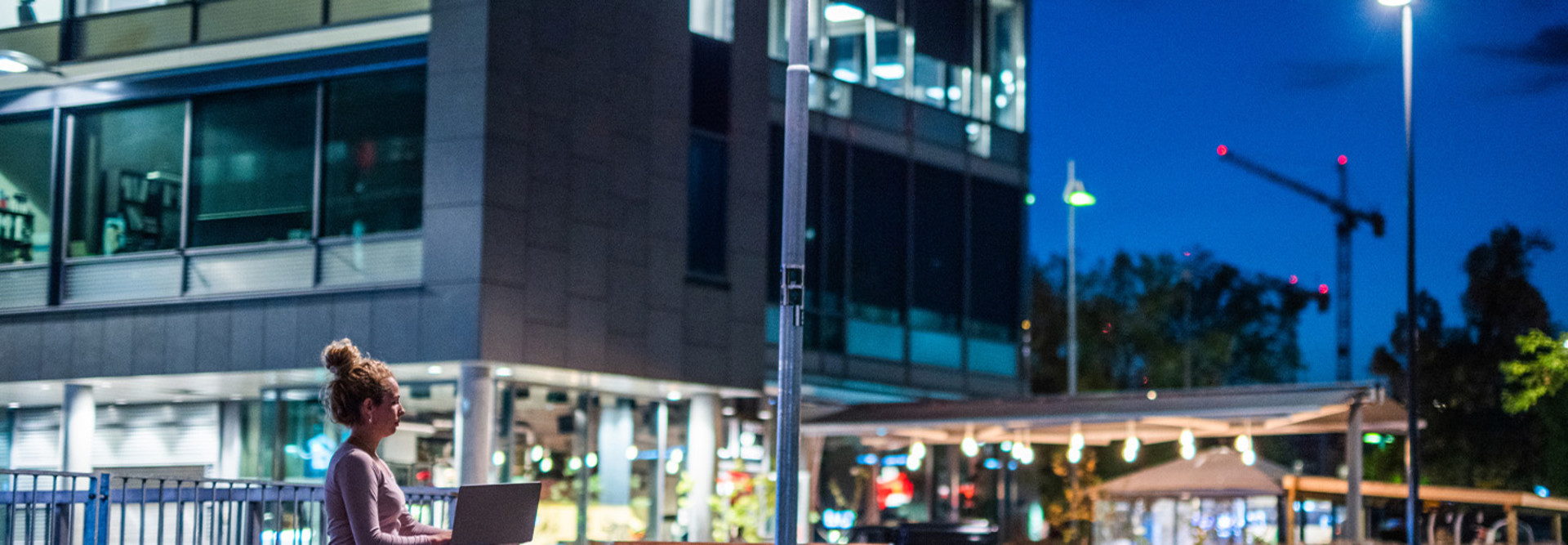Cities Begin with Streetlights and Add Sensors
Kansas City, Mo., has long been a leader among smart cities, initiating a public-private partnership in 2016 to introduce smart city innovations to its downtown area. It built a “living lab” over a high-speed fiber network, producing abundant Wi-Fi along a streetcar line.
The city then continued to build, adding a sensor network to collect data on the movements of people and vehicles downtown in partnership with Sprint, Cisco and others. It demonstrated success through the establishment of Wi-Fi access points, smart lighting video nodes and smart kiosks.
MORE FROM STATETECH: Raleigh's smart city program tackles traffic management.
Montgomery, Ala., followed a similar path in introducing smart city tech to its downtown entertainment district.
The city launched a project with intelligent streetlights, Wi-Fi, a parking management app and more, stretching from the Montgomery Riverwalk Stadium to the city’s downtown entertainment and conference district.
As GovTech reported, “The area will be anchored by fiber-optic infrastructure to support free Wi-Fi access, expansion of the city’s open data portal, smart parking and more. Alabama Power will take the lead on upgrading existing streetlights to LEDs, ultimately bringing the technology to some 22,000 streetlights citywide and saving an estimated $650,000 over five years, according to utility officials.”
Federal Grant Programs Boost Funding for Public Safety Zones
In the past year, the Infrastructure Investment and Jobs Act (IIJA) created the Safe Streets and Roads for All, funding the discretionary program with $5 billion over five years. In 2022, the first year of the program, regional and local governments were able to apply for $1 billion in funding. SS4A grants are intended “to prevent roadway deaths and serious injuries.”
The U.S. Department of Transportation identifies several potential smart city applications for the SS4A grants, including transforming dangerous roadways with safety improvements to control speed and improve visibility, as well as enhancing pedestrian safety through sidewalk and signal improvements, mobile pedestrian signals and other changes.
The DOT also suggests the deployment of “advanced transportation technologies,” such as vehicle-to-infrastructure advisory speed limit systems and more.
The National League of Cities highlighted additional opportunities available under the Strengthening Mobility and Revolutionizing Transportation grant program, also created by IIJA. SMART dedicates $100 million in federal grants to support smart community projects from fiscal year 2022 through 2026.
EXPLORE: How mission-critical operations centers improve public safety.
SMART “will build on the legacy of USDOT’s Smart City Challenge and allow communities to partner with technology and community partners to bring new smart city solutions to their challenges,” notes the National League of Cities.
Again, the DOT outlines several examples of how smart city initiatives can play a role in a public safety and innovation zone by using advanced technologies. Here are a few of the more interesting scenarios it envisions:
- Facilitate on-demand conversion of right of way for pedestrians and cyclists with adaptable smart infrastructure.
- Improve operations and maintenance by using sensors to monitor real-time conditions of pavement quality, signage and crosswalks.
- Address nonrecurrent congestion, prioritize investments for pedestrians and cyclists, and explore other complex problems, leveraging advanced tools such as AI and digital twins.
Pedestrian safety is a top priority for busy entertainment districts where local governments establish public safety and innovation zones. Projects funded through the IIJA grant program certainly will boost public safety and innovation zones, building upon the initial success cities have seen with such projects.
Applications for IIJA grants are closed for 2022, but funding opportunities under the program will reopen sometime in the next year.
This article is part of StateTech’s CITizen blog series. Please join the discussion on Twitter by using the #StateLocalIT hashtag.












